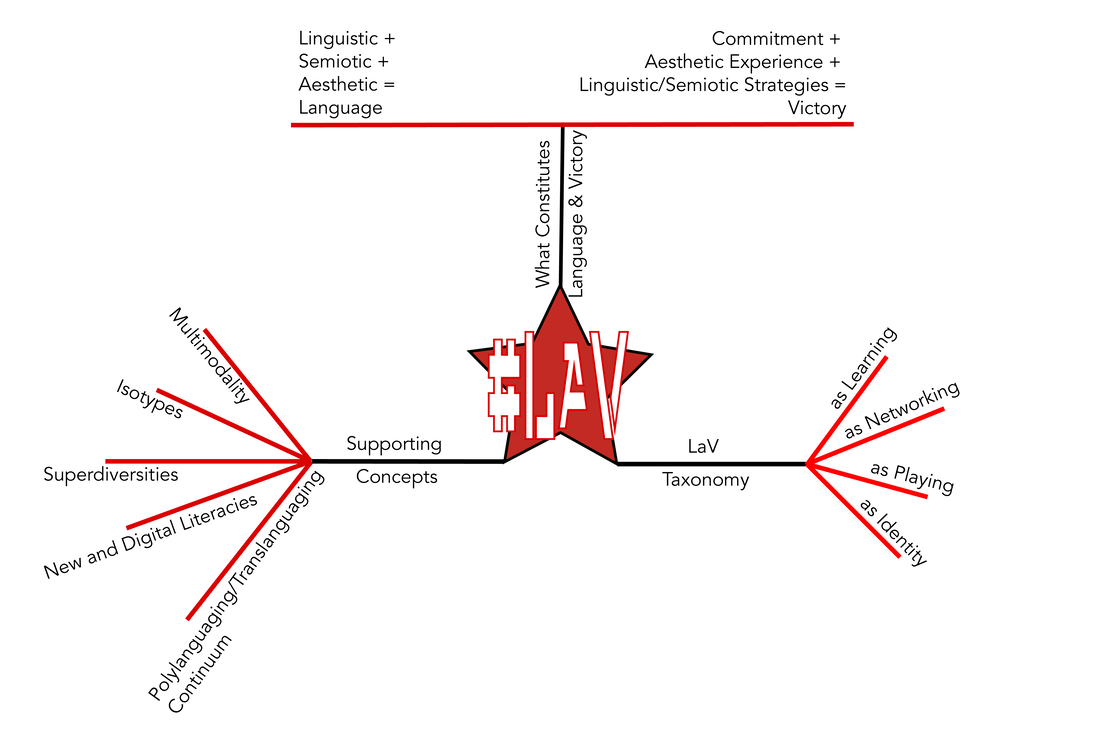Project Technical Data |
|
Stage One:
|
During Stage One (S Castaño & Orrego, 2015; Mora, et al., 2016a, 2016b), our research team zeroed on the linguistic component of videogame interactions, establishing an initial taxonomy for LaV, as follows: LaV as Networking, LaV as Learning, and LaV as Playing (Mora, et al., 2016b). The initial taxonomy covered different instances within and outside of the games themselves. LaV as Networking, for instance, explored how gamers increase their own networks and connections as essential elements that affect their knowledge of the game. LaV as Learning referred to the resources that gamers seek to master their games of interest (e.g. guides, tutorials, videos, playthroughs, etc.). Finally, LaV as Playing describes the different strategies, language-wise, that gamers resort to according to the genres and game stages.
|
Setting Stage Two |
The first question about linguistic factors vs. the game is important due to the multimodal nature of videogames. During playtime, gamers rely on more than just words (both written and spoken) to engage with the game. They rely on sounds, images, icons, and in some games, body language (as is the game of platforms such as Kinetic or Nintendo Wii). If we want to broaden our understanding of LaV, we can no longer just frame it from a linguistic dimension of language use. Instead, we need to consider how the semiotic and aesthetic (Gutiérrez, 2015) dimensions of language construction influence the gaming experience at large. Following up on these dimensions, we also began to inquire about how long-term engagement with a game is a factor that contributes to victory. Winning a game, we argue, is the result of developing familiarity and skill in the game. You can only gain skill if you are committed to the game. Commitment, therefore, goes beyond language and into gamers identity (Ramírez & Gaviria, 2017) with the features of the game.
|
The LaV Framework Evolves |
The first phase of LaV explored the use of English and other languages as a communicative resource to achieve success (literally understood as victory, hence the acronym). For this second phase of our project, we intend to take the notion of LaV beyond the linguistic dimension, adding the semiotic and aesthetic dimensions to our understanding of language. We are now exploring how the use of the different signs, icons, and sounds (to name a few) present in video games are also part of the gamers' communicative repertoire as they navigate games played in a second language. Conceptually, we have expanded LaV to include baseline definitions for language and victory, five key concepts and a developing taxonomy (for more on these concepts, we invite you to read the LSLP Micro-Papers for all concepts, including LaV itself):
|
Exploring Games, Genres, Roles, and Spaces |
Our inquiries merge elements from digital and autoethnography for the exploration of LaV in video games. For this work, we rely on the strengths of our researchers and their extended background as amateur, hardcore, and professional gamers. One line of inquiry for our research includes studying genres and their surrounding communities, in five specific genres:
A second line of inquiry, related to issues of identity and isotypes, has to do with the evolution of video games over time and what specific elements (characters, settings, storylines, etc.) remain constant over time. This will be an attempt to carry out some sort of multimodal archaeology of these games. |
Academic Presentations and Publications
|
Our team has begun disseminating their proposals and early work since 2017. Here is the detail so far:
2017
|




